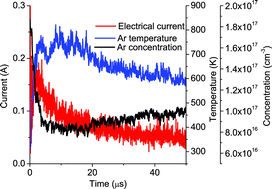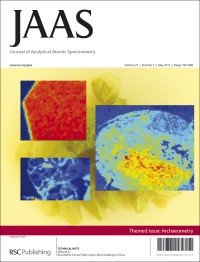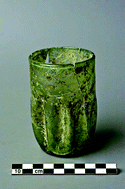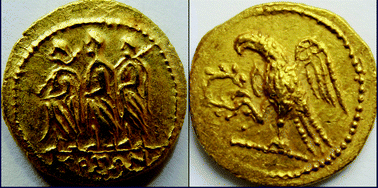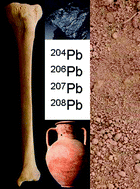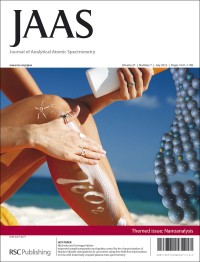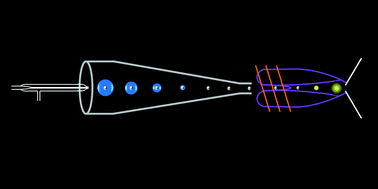The latest issue of JAAS is now online, which is a themed issue featuring papers from the 2012 US Winter Conference on Plasma Spectrochemistry, which was held 9–14 January 2012, Tucson, Arizona USA. An overview of the conference can be found in the Editorial by Ramon M. Barnes.
Summary of the 2012 Winter Conference on Plasma Spectrochemistry January 9–14, 2012, Tucson, Arizona
Ramon M. Barnes
J. Anal. At. Spectrom., 2012, 27, 1169-1172
DOI: 10.1039/C2JA90039D
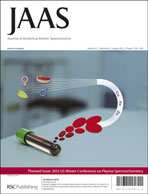 The front cover features work from our new JAAS chair Frank Vanhaecke, Ghent University, Belgium, and colleagues who used multi-collector ICP-MS to test for transition metals in human blood. They looked at metabolically important metals such as Cu, Fe and Zn and examined the differences in their levels in the blood of people with differing diets.
The front cover features work from our new JAAS chair Frank Vanhaecke, Ghent University, Belgium, and colleagues who used multi-collector ICP-MS to test for transition metals in human blood. They looked at metabolically important metals such as Cu, Fe and Zn and examined the differences in their levels in the blood of people with differing diets.
Isotopic analysis of the metabolically relevant transition metals Cu, Fe and Zn in human blood from vegetarians and omnivores using multi-collector ICP-mass spectrometry
Lana Van Heghe, Emma Engström, Ilia Rodushkin, Christophe Cloquet and Frank Vanhaecke
J. Anal. At. Spectrom., 2012, 27, 1327-1334
DOI: 10.1039/C2JA30070B
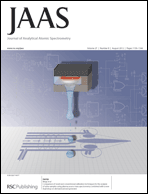 On the inside front cover there is an image from Nicolas H. Bings and colleagues from Johannes Gutenberg-University Mainz, Germany, who were looking at the accuracy and precision of analytical data from the analysis of liquid samples.
On the inside front cover there is an image from Nicolas H. Bings and colleagues from Johannes Gutenberg-University Mainz, Germany, who were looking at the accuracy and precision of analytical data from the analysis of liquid samples.
Comparison of novel and conventional calibration techniques for the analysis of urine samples using plasma source mass spectrometry combined with a new dual-drop-on-demand aerosol generator
Jan O. Orlandini v. Niessen, Jan H. Petersen, J. Niklas Schaper and Nicolas H. Bings
J. Anal. At. Spectrom., 2012, 27, 1234-1244
DOI: 10.1039/C2JA30039G
These two cover articles will be free to access and read for 6 weeks, so click through and take a look.
We have a HOT paper from JAAS Editorial Board member Gary M. Hieftje, Indiana University, USA, who with colleagues presents a modeling investigation into the thermal mechanism for the formation of electrical prepeak and pressure waves in a microsecond direct current pulsed glow discharge.
Thermal mechanism for formation of electrical prepeak and pressure waves in a microsecond direct current pulsed glow discharge with a Grimm-type source: a modeling investigation
M. Voronov, V. Hoffmann, W. Buscher, C. Engelhard, S. J. Ray and G. M. Hieftje
J. Anal. At. Spectrom., 2012, 27, 1225-1233
DOI: 10.1039/C2JA30014A
The latest ASU on Elemental Speciation is also available in this month’s issue.
Atomic spectrometry update. Elemental speciation
Robert Clough, Lindsay R. Drennan-Harris, Chris F. Harrington, Steve J. Hill and Julian F. Tyson
J. Anal. At. Spectrom., 2012, 27, 1185-1224![]()
DOI: 10.1039/C2JA90037H


